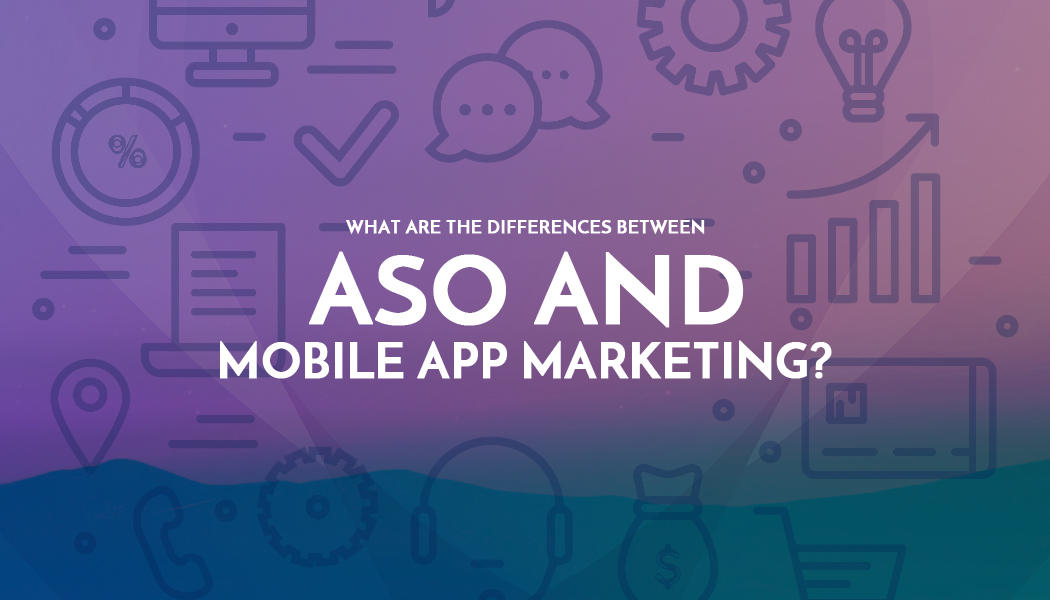What Are The Differences Between ASO And Mobile App Marketing?
Google Play Market and Apple App Store have been an integral part of our lives for over a decade now. We download and use programs from these stores daily, so obviously, many people have turned to creating their own mobile apps as a means of expressing themselves and making a living at the same time.
But what can you do to make people discover your app? Of course, promote it. You might have heard of such things as mobile app marketing and app store optimization (aka ASO). What's the difference? Well, let's find out.
What is mobile app marketing?
Mobile app marketing includes all the actions you do to grab the attention of consumers through a mobile device so that they discover an app, install it, open it, and continue using it. Mobile app marketing is an interactive multichannel promotion of products or services for mobile devices that can include anything from technology to trade shows to billboards.
There are two major types of mobile app marketing:
-
App User Acquisition: This is how app developers find their audience. With millions of apps available on different app stores, it may be difficult to get your app discovered, so a good marketing campaign can help your app build an audience. Even though most app user acquisition campaigns focus on the digital space, it's becoming more and more popular to advertise in public spaces such as subways, airports, and billboards. The primary aim of app user acquisition techniques is to increase downloads, so ASO is directly related to this type of mobile app marketing and is an integral part of it. In terms of advertising in the digital space, the most effective ads are usually the ones placed on popular social media platforms such as Instagram, Facebook, and Twitter.
-
Mobile Engagement Marketing: The aim of mobile engagement marketing is to engage users and increase retention. This is mostly achieved through push notifications and in-app messages. Push notifications are banners or alerts that appear on the home or lock screen of users' devices. If the user has downloaded your app, they will be able to receive push notifications from it, which are similar to a text message. Push notifications usually achieve one of the following: give a status update or alert, use location to give users highly personalized messages, or notify about special offers, major new features, or a relevant app update. Push notifications make your users come back to your app and can dramatically increase engagement. There are also notifications called rich push notifications which usually also include an image, video, or sound file to make your alert even more effective. In-app messages, on the other hand, appear in the app itself when the user is using it. They can show off product updates, confirm a purchase, request a review or rating in an app store, or give a personalized recommendation or suggestion. In-app messages can increase conversions by four times, increase app launches, and improve mobile UX.
What is app store optimization?
App store optimization, also known as ASO, consists of two main elements: marketing optimization and search engine optimization. Marketing optimization includes icons, screenshots, and video. But what beginners have the most trouble with is the second element.
ASO is also often called mobile app SEO, because it focuses on expert resource application related to the app ranking improvement directly in app stores such as Google Play, Windows Store, iTunes, and others. Its importance can be measured in numbers: more than 65% of apps get discovered through the app store (according to Forrester).
Some of the aims ASO can help you achieve include:
- High organic download rating
- Increase of click-through rate
- Positive reviews
- Increase of brand exposure
ASO's importance increases exponentially every year as mobile devices get more and more important in our daily lives. App store optimization is not a whim anymore, but a necessity and those marketers who choose to ignore it are missing out on a lot.
As mentioned above, ASO is kind of like SEO but for apps. The main difference is that SEO focuses on ranking your site in search results, while ASO focuses on ranking your app in app search results.
How can you use them?
Users will search for your app in app stores rather than usual search engines. This means that you must optimize your app with the help of ASO. App store optimization is a part of mobile app marketing, but the latter's usage has been explained before in this article, so this section will mostly focus on applying ASO practices to your app.
In order to understand what app store optimization focuses on, we must look at the app store ranking factors that directly influence where your app appears in app search results:
- App Title & Subtitle
- Keywords
- Quality Backlinks
- Short & Full Descriptions
- In-App Purchases
- Reviews & Ratings
- Regular Updates
- Downloads (Velocity)
- Usage Metrics
- App Performance
Most of the time, ASO includes visual transformation such as changing app icons, screenshots, and so on. Here are five elements to focus on to improve app store optimization:
-
App Name: Try to make your app title shorter and include relevant keywords in it. If you don't know what your keywords are, use Keyword Tool to determine them.
-
App Description: This should also preferably contain keywords, but don't forget to include all of the necessary information about your app.
-
App Icon/Logo: Your app's logo must reflect your app's purpose and direction. Experiment with different variants until you find the one that yields the most downloads.
-
Localization: This depends on your needs, but ideally, you would want to market your app to other countries as not everyone is looking for apps in English. You can easily localize your app with the help of such online translation service as The Word Point. By the way, localization involves both translating your app to other languages and adapting it to have an appropriate meaning in those languages.
-
App Screenshots: Screenshots make the first impression about your app as users won't download it to see how it looks. This is why you must include colorful screenshots that should excite your potential users. Make the text in them readable and include a call to action.
How do you know if your mobile app marketing works?
Before setting any goals for yourself, do a lot of research and collect data to see what are the standards for different apps. You want to be looking at such things as:
-
The number of downloads: The number of times your app was downloaded.
-
Retention rate: The number of users who return to your app after the first visit.
-
Daily/monthly active users: The number of users engaging with your app on a daily and monthly basis.
-
Session length: The amount of time your users spend in your app on average (depends on the goal you want your users to accomplish).
-
Time in the app: The amount of time your users spend in your app on a daily, weekly, or monthly basis.
-
Acquisitions: The number of users who download your app from a particular source such as certain social media, a website, etc.
-
Screen flow: The paths users tale through your app.
-
Lifetime value (LTV): The kind of value your users represent throughout their time as users.
Final Thoughts
In conclusion, using app store optimization may even be more important than mobile app marketing, so you definitely shouldn't ignore this method. It will make your app discovered by more users and your creation will rise in popularity way faster.



